Jon-Fredrik Nielsen
Stochastic Optimization of 3D Non-Cartesian Sampling Trajectory (SNOPY)
Sep 22, 2022
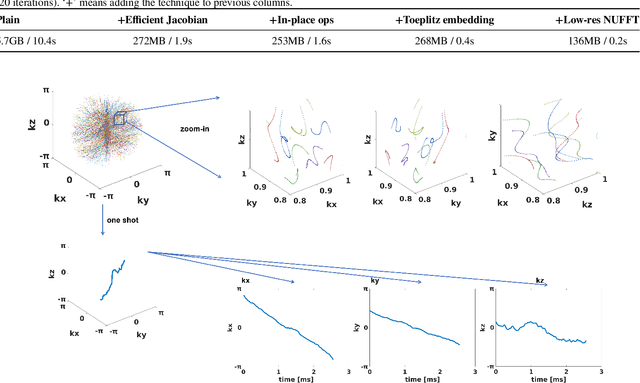
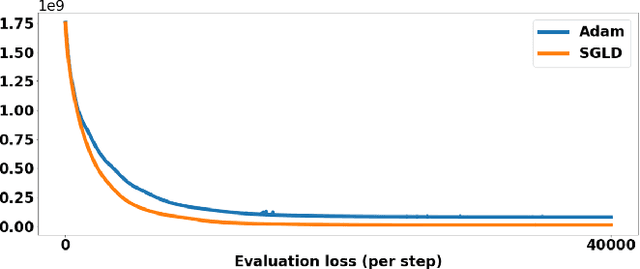

Abstract:Optimizing 3D k-space sampling trajectories for efficient MRI is important yet challenging. This work proposes a generalized framework for optimizing 3D non-Cartesian sampling patterns via data-driven optimization. We built a differentiable MRI system model to enable gradient-based methods for sampling trajectory optimization. By combining training losses, the algorithm can simultaneously optimize multiple properties of sampling patterns, including image quality, hardware constraints (maximum slew rate and gradient strength), reduced peripheral nerve stimulation (PNS), and parameter-weighted contrast. The proposed method can either optimize the gradient waveform (spline-based freeform optimization) or optimize properties of given sampling trajectories (such as the rotation angle of radial trajectories). Notably, the method optimizes sampling trajectories synergistically with either model-based or learning-based reconstruction methods. We proposed several strategies to alleviate the severe non-convexity and huge computation demand posed by the high-dimensional optimization. The corresponding code is organized as an open-source, easy-to-use toolbox. We applied the optimized trajectory to multiple applications including structural and functional imaging. In the simulation studies, the reconstruction PSNR of a 3D kooshball trajectory was increased by 4 dB with SNOPY optimization. In the prospective studies, by optimizing the rotation angles of a stack-of-stars (SOS) trajectory, SNOPY improved the PSNR by 1.4dB compared to the best empirical method. Optimizing the gradient waveform of a rotational EPI trajectory improved subjects' rating of the PNS effect from 'strong' to 'mild.' In short, SNOPY provides an efficient data-driven and optimization-based method to tailor non-Cartesian sampling trajectories.
Off-resonance artifact correction for magnetic resonance imaging: a review
May 02, 2022
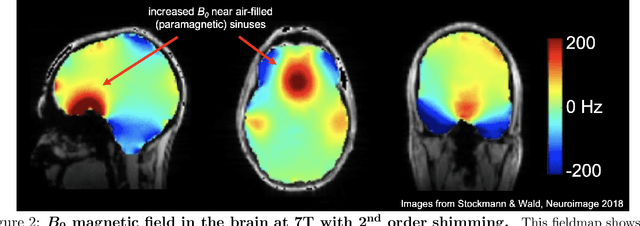
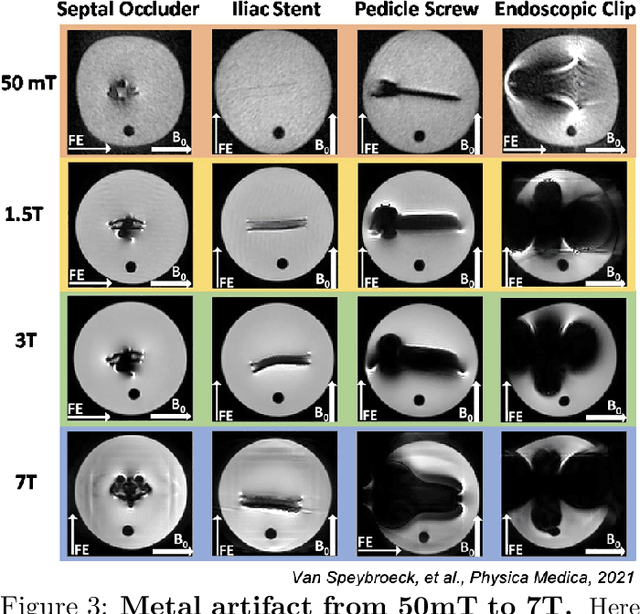
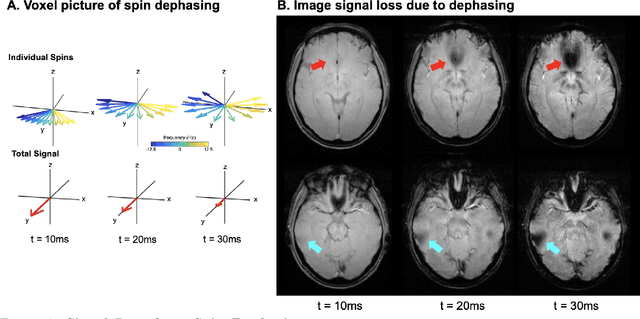
Abstract:In magnetic resonance imaging (MRI), inhomogeneity in the main magnetic field used for imaging, referred to as off-resonance, can lead to image artifacts ranging from mild to severe depending on the application. Off-resonance artifacts, such as signal loss, geometric distortions, and blurring, can compromise the clinical and scientific utility of MR images. In this review, we describe sources of off-resonance in MRI, how off-resonance affects images, and strategies to prevent and correct for off-resonance. Given recent advances and the great potential of low field and/or portable MRI, we also highlight the advantages and challenges of imaging at low field with respect to off-resonance.
B-spline Parameterized Joint Optimization of Reconstruction and K-space Trajectories (BJORK) for Accelerated 2D MRI
Jan 27, 2021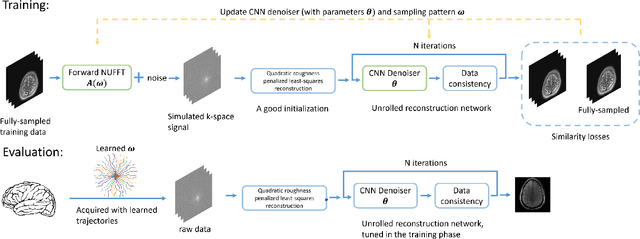
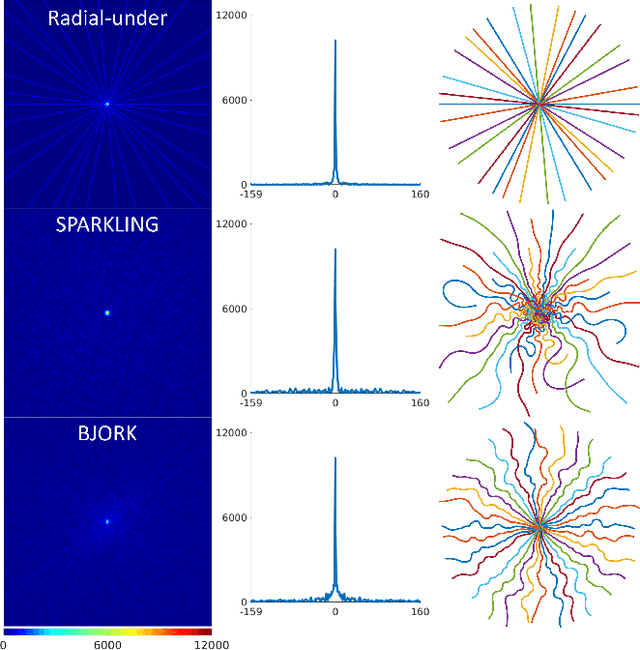
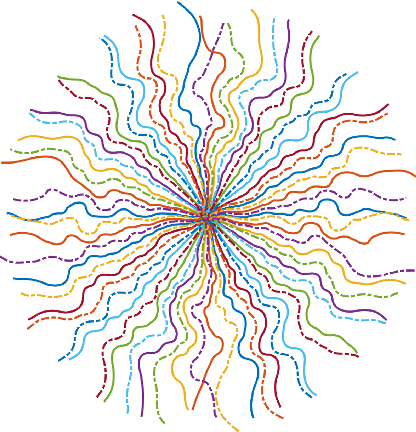

Abstract:Optimizing k-space sampling trajectories is a challenging topic for fast magnetic resonance imaging (MRI). This work proposes to optimize a reconstruction algorithm and sampling trajectories jointly concerning image reconstruction quality. We parameterize trajectories with quadratic B-spline kernels to reduce the number of parameters and enable multi-scale optimization, which may help to avoid sub-optimal local minima. The algorithm includes an efficient non-Cartesian unrolled neural network-based reconstruction and an accurate approximation for backpropagation through the non-uniform fast Fourier transform (NUFFT) operator to accurately reconstruct and back-propagate multi-coil non-Cartesian data. Penalties on slew rate and gradient amplitude enforce hardware constraints. Sampling and reconstruction are trained jointly using large public datasets. To correct the potential eddy-current effect introduced by the curved trajectory, we use a pencil-beam trajectory mapping technique. In both simulations and in-vivo experiments, the learned trajectory demonstrates significantly improved image quality compared to previous model-based and learning-based trajectory optimization methods for 20x acceleration factors. Though trained with neural network-based reconstruction, the proposed trajectory also leads to improved image quality with compressed sensing-based reconstruction.
Fast, Precise Myelin Water Quantification using DESS MRI and Kernel Learning
Sep 24, 2018
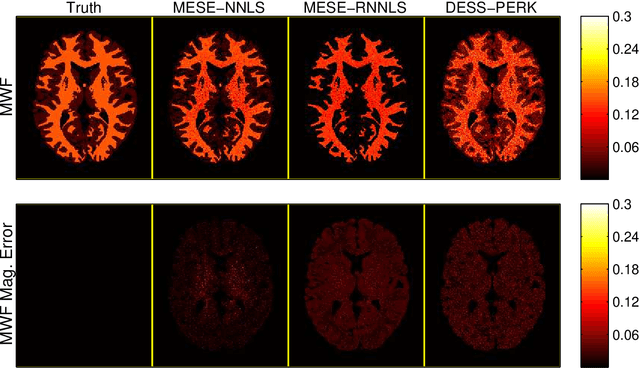

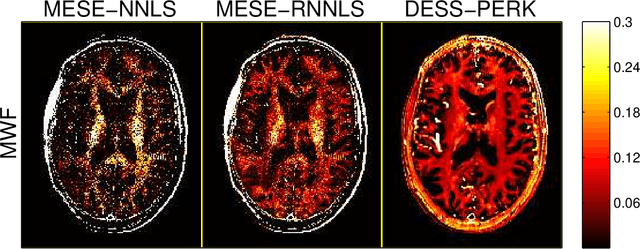
Abstract:Purpose: To investigate the feasibility of myelin water content quantification using fast dual-echo steady-state (DESS) scans and machine learning with kernels. Methods: We optimized combinations of steady-state (SS) scans for precisely estimating the fast-relaxing signal fraction ff of a two-compartment signal model, subject to a scan time constraint. We estimated ff from the optimized DESS acquisition using a recently developed method for rapid parameter estimation via regression with kernels (PERK). We compared DESS PERK ff estimates to conventional myelin water fraction (MWF) estimates from a longer multi-echo spin-echo (MESE) acquisition in simulation, in vivo, and ex vivo studies. Results: Simulations demonstrate that DESS PERK ff estimators and MESE MWF estimators achieve comparable error levels. In vivo and ex vivo experiments demonstrate that MESE MWF and DESS PERK ff estimates are quantitatively comparable measures of WM myelin water content. To our knowledge, these experiments are the first to demonstrate myelin water images from a SS acquisition that are quantitatively similar to conventional MESE MWF images. Conclusion: Combinations of fast DESS scans can be designed to enable precise ff estimation. PERK is well-suited for ff estimation. DESS PERK ff and MESE MWF estimates are quantitatively similar measures of WM myelin water content.
Dictionary-Free MRI PERK: Parameter Estimation via Regression with Kernels
Oct 06, 2017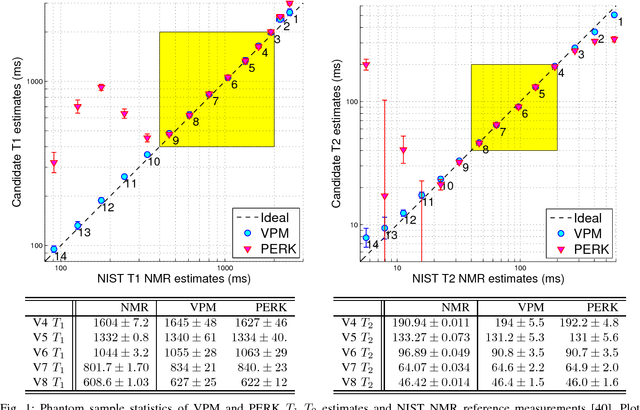
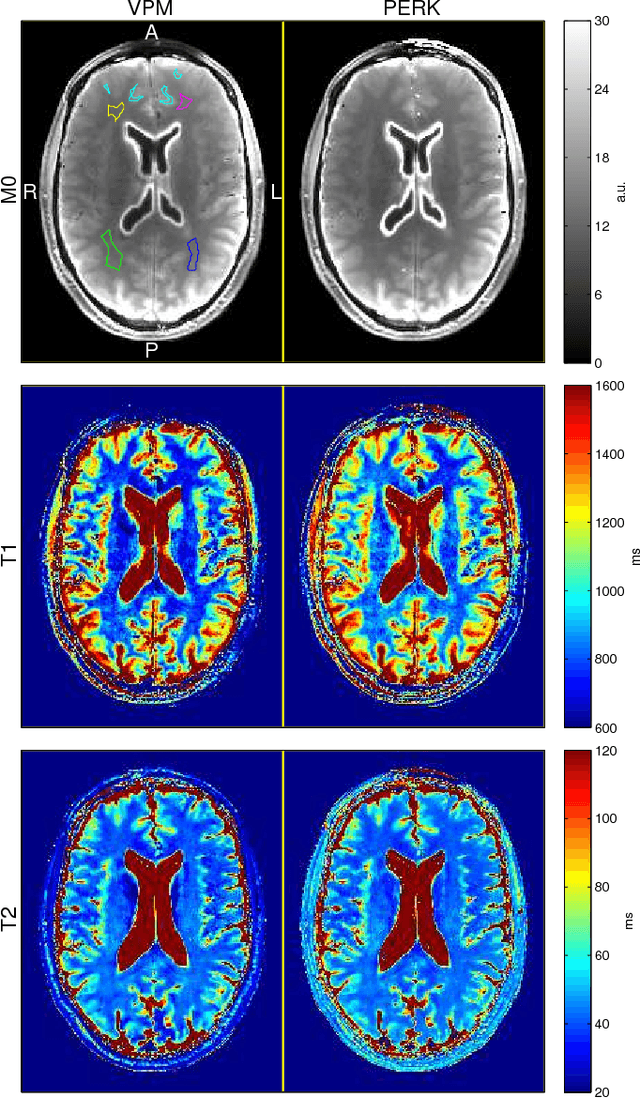

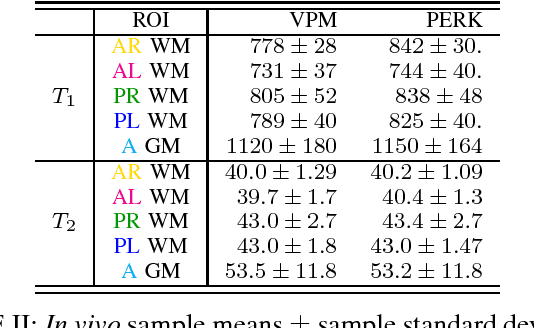
Abstract:This paper introduces a fast, general method for dictionary-free parameter estimation in quantitative magnetic resonance imaging (QMRI) via regression with kernels (PERK). PERK first uses prior distributions and the nonlinear MR signal model to simulate many parameter-measurement pairs. Inspired by machine learning, PERK then takes these parameter-measurement pairs as labeled training points and learns from them a nonlinear regression function using kernel functions and convex optimization. PERK admits a simple implementation as per-voxel nonlinear lifting of MRI measurements followed by linear minimum mean-squared error regression. We demonstrate PERK for $T_1,T_2$ estimation, a well-studied application where it is simple to compare PERK estimates against dictionary-based grid search estimates. Numerical simulations as well as single-slice phantom and in vivo experiments demonstrate that PERK and grid search produce comparable $T_1,T_2$ estimates in white and gray matter, but PERK is consistently at least $23\times$ faster. This acceleration factor will increase by several orders of magnitude for full-volume QMRI estimation problems involving more latent parameters per voxel.
 Add to Chrome
Add to Chrome Add to Firefox
Add to Firefox Add to Edge
Add to Edge